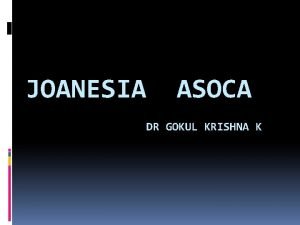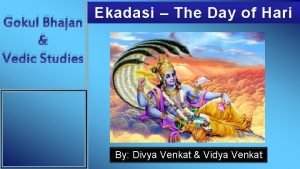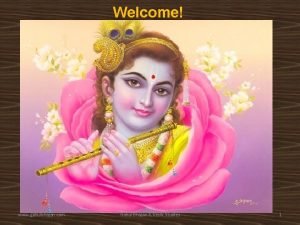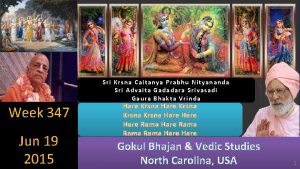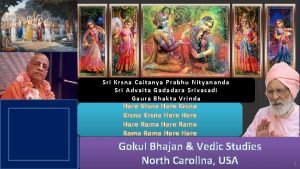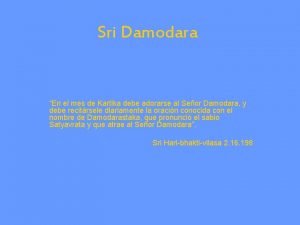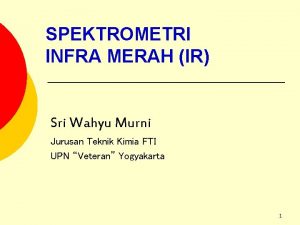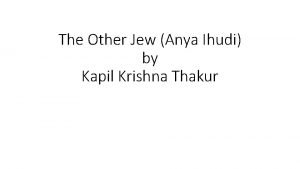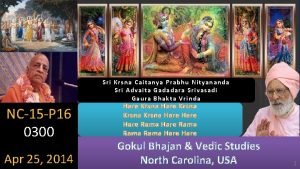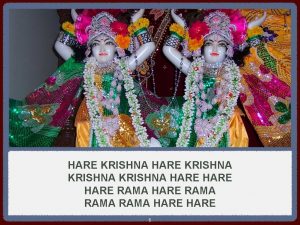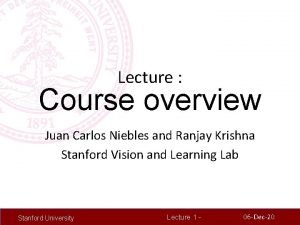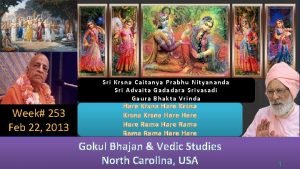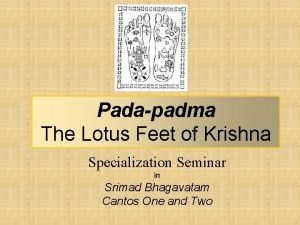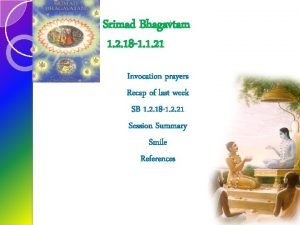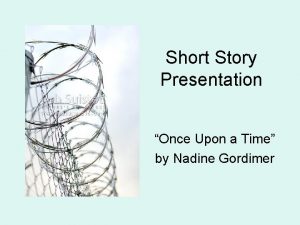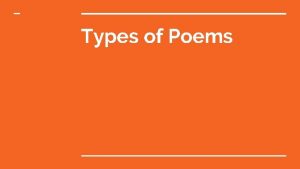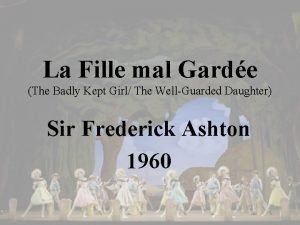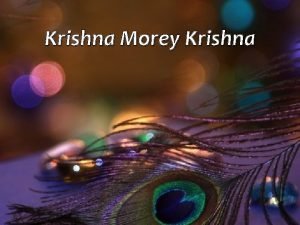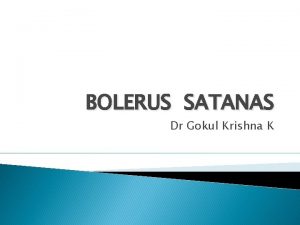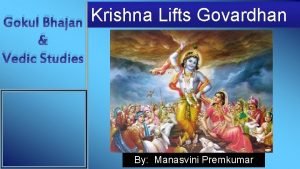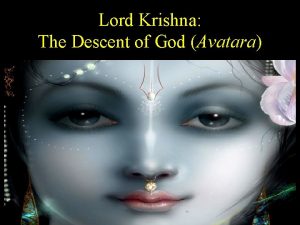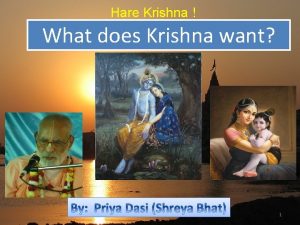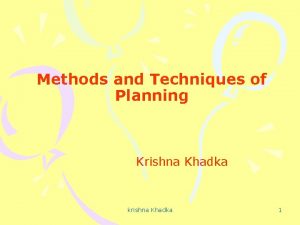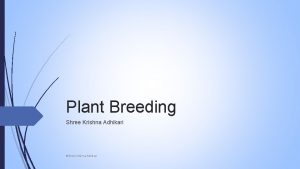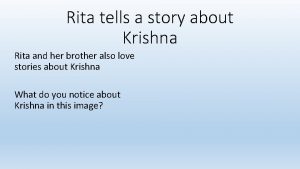JOANESIA ASOCA DR GOKUL KRISHNA K A STORY

















































- Slides: 49

JOANESIA ASOCA DR GOKUL KRISHNA K




A STORY OF ASHOKA TREE Sita sat under an Ashoka tree (a- shoka : without sorrow) in the Ashoka grove during her stay in Lanka is commonly known episode of the Ramayana.

Years before the abduction of Sita by Ravana, there lived a cannibal(a person who eats the flesh of other human being) among the Bhil tribe named Sashoka.

He roamed the forests of central India and lived by killing passers-by and consuming them as food.

Walking past the forest in search of prey one day, Sashoka chanced upon a little hut, outside which sat a hermit, deep in meditation. He had never seen another human being in that state before, serene, motionless and at peace.

Watching the rishi who seemed to be in a trance, something stirred within Sashoka and he was drawn towards the sage.

“You are at such peace!” Sashoka blurted out when he found himself standing before the rishi. “Why am I not like you? ” “Who are you son? ” asked the rishi, opening his eyes. “What do you want? ”

“I am Sashoka, a cannibal” replied the Bhil. “I kill people and roast them for food. People fear me and I derive pleasure from that. But you…you are at such peace with the world. I want to be like you. ” The rishi smiled. “I am glad you feel repentance for your deeds. But you cannot have what you ask. At least not immediately. ”

“What must I do to attain such peace? So that people may love me instead of running away from me in fear? ” “Live out your life in penance and prayer, ” replied the rishi.

“I am ready to do whatever it takes!” Sashoka fell on his knees. “I do not want to live like this anymore, ” he began to sob.

“Good man!” said the rishi lifting Sashoka up. “Your time will come. Live your life in penance and in your next life you will be born as a tree in Lanka where Sita, the abducted wife of Rama will take refuge under your shade. ” Sashoka’s eyes lit up as he wiped his tears.

“One day, ” the rishi continued, “Hanuman, the monkey, will come in search of Sita. He will sit upon your branches as he conveys Rama’s message to his wife.

Upon hearing his words, Sita’s suffering and sorrow will cease. At that moment, your sins will be washed away too and your grief will forever disappear. ”

Sashoka bowed before the sage. “I eagerly await that day!” he said. And the rishi proclaimed, “you will be known as Asoka, the tree that takes away grief!”

Hence it is that the Ashoka tree, under whose deep green foliage and lovely scarlet flowers, Sita took refuge, is associated with the absence of sorrow.

The Asoka tree, also called the Sita. Ashok, is a medium sized evergreen tree with large flame-like scarlet flowers that appear in clusters. Its deep green leaves are copper-coloured when young and hang placidly from the branches. It also has medicinal uses. Its botanical name is Saraca indica.

Ashoka Tree (Saraca asoca) is known for its vibrant red flowers and is associated with Kama Deva or the god of love. For this reason, people often pray to this tree for conception and birth of a child.

The Ashoka tree is also planted in Buddhist Monasteries because Gautama Buddha is believed to have been birthed under an Ashoka tree.

CHARACTERISTIC OF ASHOKA TREE Ashoka is one of the most legendary and sacred trees of India. The Ashoka is a rain-forest evergreen tree. The flowering season is around April and May. It is found in central and eastern Himalayas as well as on the west coast of Bombay.

Ashoka is a Sanskrit word meaning “without grief” or the one, who gives no grief. In India married Hindu women eat the flower buds of Saraca asoca on the "Ashok Shasthi day" to guard their children against grief and sorrow.

The Hindu people regard it as sacred, being dedicated to Kama Deva, God of Love. The tree is a symbol of Love. Its beautiful, delicately perfumed flowers are used in temple decoration. There also festivals associated with this flower.

The womenfolk of Chhattisgarh boil the bark of Ashoka in cow's milk, add sugar and consume it once a day for three days and repeat the course after three months to prevent gynaecological disorders. So, Ashoka is also seen as a remedy for women health.

The bark of Saraca asoca contains the estrogenic compound ketosterol, which is effective against menorrhagia due to uterine fibroids and internal hemorrhoids and also enhances the restoration of the endometrium and stops bleeding.

Side-Effects & Allergies of Ashoka Tree Although the health benefits of Ashoka tree are numerous, pregnant women should abstain from consuming products from this tree as it might lead to complications. People who are sensitive to certain types of food should consult a doctor before consuming products of this tree.

Botanical name: Saraca indica Linn. Natural Order: Caesalpiniaceae Distribution: India, Central Himalayan, Bangladesh, Sri Lanka, Malaysia. Flowering time: March-April Fruiting time: September

Flowers are yellowish to deep red. Petals absent. It has been traditionally used in Indian system of medicine for treatment of uterine, genital ailments and other reproductive disorders in women, fever , pain and inflammation. All parts of the tree is used as medicine.

Common names English: Asoka Tree Hindi: Ashok Sanskrit: Asoka; Kankeli Tamil: Asogam Introduced by Dr D. N Ray

The Flowers Its dried flowers are used in diabetes and hemorrhagic dysentery. The flowers are considered to be a uterine tonic and are used in cases like burning sensation, dysentery, scabies in children and inflammation.

The Seeds helps in bone strengthening and the ash of plant is good for external application in rheumatoidarthritis. It has anticancer activity also where in some cases it acts on cancer cells.

The Roots Paste of roots is useful in skin conditions such as ulcers, itching in eczema, psoriasis, dermatitis, and herpes like conditions and scabies. It improves skin complexion and skin tone. It can also be used in cases of discoloration or loss of pigmentation.

SYMPTOMS Headache Very congestive headache, which is better by free menstrual flow. Patient has periodical headache which is better by bathing. Patient has heaviness of head with vertigo.

Eyes There is redness along with burning and itching. Styes on upper eyelid Patient’s eyes are easily tired on least exertion. Patient is also difficulty in seeing far objects clearly.

Ears There is pain in ears along with hardness of hearing after a severe cold. Nose There is profuse watering form the nose along with sneezing and soreness of the nostrils.

There is obstruction of the nose. It is very good remedy for loss of smell and bleeding from nose. Face Patient has pale face which alternately hot and red along with pimples on the face.

Mouth There is dryness along with excessive thirst. Patient drinks large quantities of water at a time. Patient has thickly white or brown coated tongue along with bleeding gums and toothache.

Throat Redness of the throat with a sore feeling. Stomach There is excessive nausea, along with pain in the stomach which is colicky in nature, with no desire for food, and he eats little.

Patient has a desire for sweet, and sour acid things, and patient does not like to drink mild. Stool Patient has hard distended foul smelling flatus worse in the evening. It is very good remedy for long duration constipation, in which patient passes stool every third or fourth day

He has pain before stool, there is soreness in the anus, with at times bleeding piles with itching and smarting. Urinary complaints Patient has frequent bloody scanty and involuntary urination at night, with in pain in the loin(area near thighs).

Female complaints Headache due to suppression of menses with delayed or irregular menses. Menstrual discharge is scanty, pale, watery, foul smelling, blackish. It is very good remedy for amenorrhoea at puberty with headache, and loss of appetite.

Patient feel better by starting of flow. Menses at times are profuse, long lasting which makes the female weak and anemic. It is very useful remedy for problems like sterility and menopause. It is very good remedy for white discharge in infants.

Respiratory Patient experiences hurried respiration with difficulty in breathing when walking and worse in the afternoon. Back Patient experiences pain in the back and sacrum radiating towards the abdomen at night.

Important Therapeutic Indications of Janosia Ashoka Disorders of female organs Delayed and irregular menses Menstrual colic (painful sensations) Metrorrhagia (abnormal bleeding from the uterus) Menorrhagia (abnormally heavy bleeding at menstruation and metrorrhagia is the term for abnormal bleeding from the uterus)

Amenorrhea (abnormal absence of menstruation) Pain in ovaries before flow Irritable bladder with other symptoms like unilateral headache Reflex uterine

Congestive headache Better open air and by free flow. Desire for sweets Excessive nausea Obstinate constipation

DOSAGE The recommended dosage is 10 -20 drops 2 -3 times a day, depending upon the case, till improvement.

THANK YOU ALL…………….
 Joanesia asoca
Joanesia asoca Puasa ekadasi
Puasa ekadasi Gokul bhajan
Gokul bhajan Sri krsna caitanya prabhu
Sri krsna caitanya prabhu Srnvatam sva katha krishna
Srnvatam sva katha krishna Sri krsna caitanya prabhu nityananda
Sri krsna caitanya prabhu nityananda Sree krishna college of engineering vellore
Sree krishna college of engineering vellore Sai krishna kamepalli
Sai krishna kamepalli Krishna sigdel
Krishna sigdel Krishna education centre
Krishna education centre Mes de damodara
Mes de damodara Hare krishna sekta
Hare krishna sekta Sri wahyu c esther
Sri wahyu c esther Jaya jaya radha krishna yugala milana lyrics
Jaya jaya radha krishna yugala milana lyrics Krishna sigdel
Krishna sigdel Anya niewierra wikipedia
Anya niewierra wikipedia Sadhavo hrdayam mahyam
Sadhavo hrdayam mahyam Sold goods to krishna
Sold goods to krishna Crishnal
Crishnal Suresh sundaresan
Suresh sundaresan Olivier moindrot
Olivier moindrot Krishna godavari dispute
Krishna godavari dispute Motivational interviewing wiki
Motivational interviewing wiki Advaita acharya
Advaita acharya Lotus feet of krishna
Lotus feet of krishna Krishna surya sama
Krishna surya sama Krishna and trishna
Krishna and trishna Krishna avanti leicester
Krishna avanti leicester R. vijay krishna
R. vijay krishna Dr murali krishna voona
Dr murali krishna voona Krishna education centre
Krishna education centre Straight news structure
Straight news structure Summary of once upon a time by nadine gordimer
Summary of once upon a time by nadine gordimer Every picture has a story and every story has a moment
Every picture has a story and every story has a moment Narrative writing elements
Narrative writing elements Introduction of short story
Introduction of short story Story elements definitions
Story elements definitions France story
France story A song-like poem that tells a story
A song-like poem that tells a story In your notebook write question
In your notebook write question Subject animal
Subject animal Essential questions about fear
Essential questions about fear What is narrative perspective
What is narrative perspective Rewrite cinderella story
Rewrite cinderella story Kålles dam
Kålles dam An hour with abuelo
An hour with abuelo Bartelby the scrivener
Bartelby the scrivener What is a traditional story
What is a traditional story Lesson of life of pi
Lesson of life of pi La fille mal gardee online
La fille mal gardee online
